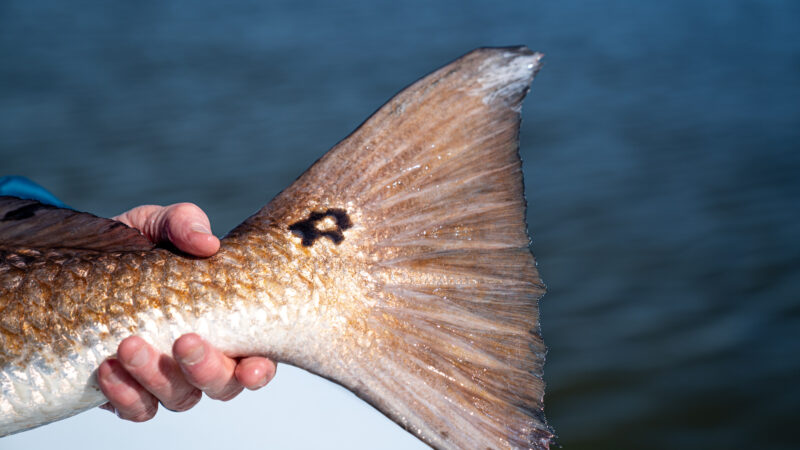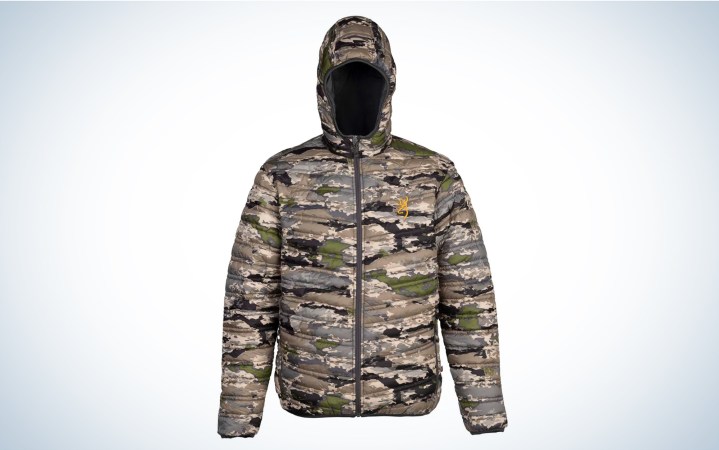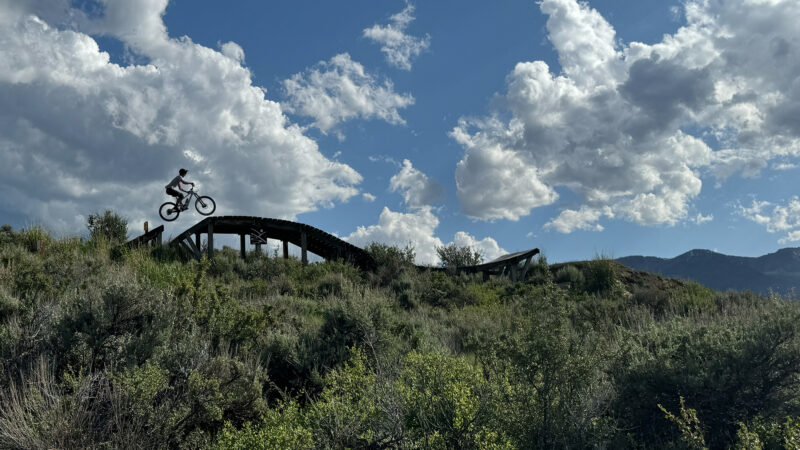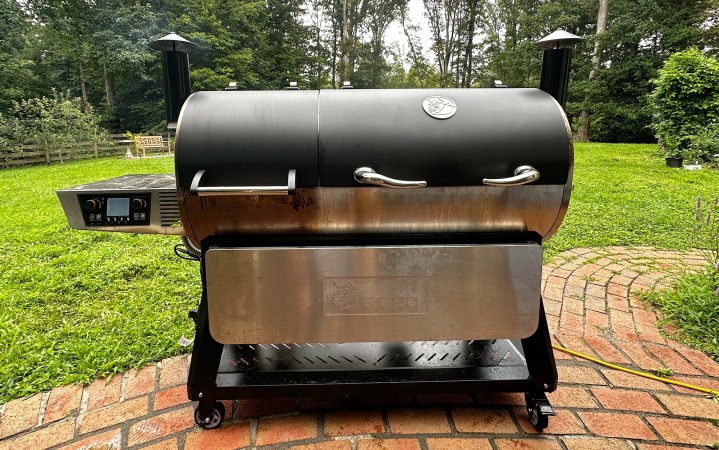Therm-a-Rest NeoAir vs Nemo Tensor
For years, possibly decades, in the great Therm-a-Rest NeoAir vs Nemo Tensor debate, the NeoAir XLite reigned supreme in the world of ultralight backpacking and thru-hiking. Its yellow-curry hue is so iconic that when ultralight sleeping bag manufacturers took product shots, that’s typically what you would see poking out the side. And the reason for this was simple: The NeoAir series had the best warmth-to-weight ratio, and it wasn’t even close.
There were some gripes, however. Therm-a-Rest NeoAir pads were more expensive than their counterparts from other manufacturers. The Winglock valve wasn’t intuitive or easy to pair with the pump sack. And the insulation inside of the pad was loud. It used to be really loud, but Therm-a-Rest fixed some of that in their NXT release.
Now Nemo is storming the barn with the release of their updated Tensor series, competing (and arguably beating) the Therm-a-Rest in the warmth-to-weight space. Let’s look at how they stack up.
Therm-a-Rest NeoAir vs Nemo Tensor Warmth to Weight
Along with Sea to Summit, Exped, Big Agnes, and REI, Therm-a-Rest and Nemo make some of the best backpacking sleeping pads. I’ll get into nitpicking the details (comfort, valve, stuff sack, noise, etc.) below, but I want to start with the two most important criteria: weight and warmth.
Weight is a no-brainer for backpackers. Lighter means less weight on your back, which lets you hike farther more comfortably. All things being equal, you want the lightest sleeping pad there is.
Warmth is where there is often confusion. While your sleeping pad is not generating heat, it is blocking the cold of the ground from seeping in through the bottom of your sleeping bag. The ground is often very cold, and your sleeping bag’s insulation is very bad at blocking it (because you are lying on top of it and squishing it). Your sleeping pad’s ability to block the cold is measured in something called R value, and is tested by a third-party using a testing procedure standardized across the industry. A higher R value will block more of the cold, while a lower R value will block less.
Read Next: What is R Value? It’s Why Your Sleeping Bag Doesn’t Keep You Warm
It’s no small feat to create a sleeping pad that is both lightweight and good at blocking the cold of the ground. This engineering is really what you are paying for when you purchase a backpacking sleeping pad. And for years, Therm-a-Rest, with their NeoAir line, was top dog. But now Nemo’s Tensor line came out with a major update, putting the two brands within spitting distance of each other. Let’s see how they stack up.
In the below table, the warmth to weight calculation is ounces divided by R value. I have not taken the depth of the sleeping pad into consideration as it does not impact the weight to warmth ratio as experienced by backpackers. The area of these two sleeping pads is identical. The lower the value in the weight to warmth index, the better.
Extreme Cold Sleeping Pads
These are the backpacking sleeping pads with the most insulation and the highest R values. This is what you want if you are sleeping on snow or frozen ground.
| Sleeping Pad | Shape and Size | Price | R Value (Warmth) | Weight | Warmth to Weight Index |
| Therm-a-Rest NeoAir XTherm NXT | Mummy, regular | $240 | 7.3 | 15.5 ounces | 2.12 |
| Nemo Tensor Extreme Conditions | Mummy, regular | $250 | 8.5 | 1 pound, 1 ounce | 2.00 |
Shoulder Season and Alpine Sleeping Pads
Aspiring thru-hikers: This is the pad you want. Warm enough to handle the alpine, but light enough to help you get to that sub 15-pound base weight. If you run especially cold, however, know that many thru-hikers and backpackers have found the extreme-cold pads to be worth the extra weight.
Because these are the pads that will be most interesting to thru-hikers and gram counters, I checked the weight of the regular size of both the Therm-a-Rest NeoAir XLite NXT and the Nemo Tensor All-Season. The official weights from the manufacturers are above, the weights I found during testing are in the parenthetical below.
| Sleeping Pad | Shape and Size | Price | R Value (Warmth) | Weight | Warmth to Weight Index |
| Therm-a-Rest NeoAir XLite NXT | Mummy, regular | $210 | 4.5 | 13 ounces (12.80 ounces) | 2.89 (2.84) |
| Nemo Tensor All-Season | Mummy, regular | $200 | 5.4 | 14.1 oz (14.55 ounces) | 2.61(2.69) |
Warm Weather Sleeping Pads
These are the pads that break the sound barrier. They are so small and so lightweight that they barely exist at all. However, they are not very good at blocking the cold of the ground. Choose one of these pads only if you run very hot or plan to backpack in a part of the world where overnight temps won’t drop below 60 degrees Fahrenheit.
| Sleeping Pad | Shape and Size | Price | R Value (Warmth) | Weight | Warmth to Weight Index |
| Therm–a-Rest NeoAir UberLite | Mummy, regular | $230 | 2.3 | 8.8 ounces | 3.82 |
| Nemo Tensor Trail Ultralight | Mummy, regular | $180 | 2.8 | 13 ounces | 4.64 |
Therm-a-Rest NeoAir vs Nemo Tensor: Which One Is Right for You?
Because these two sleeping pads are so close to one another in terms of specs, there is no one right answer. Below are the factors you should consider before making a final purchase.
Warmth vs. Weight
Nemo’s Tensor and Therm-a-Rest’s NeoAir series come in three different R rating ranges, so consider what you plan on doing and pick the pad from the series that meets your needs. If you are sleeping colder than you expected on the Therm-a-Rest UberLite, you have the wrong R value for your needs. Level up to one of the pads in the shoulder season and alpine category.
Size
While most backpackers and backpack hunters are going to go for the regular mummy size, both manufacturers offer longer versions of the mummy pad and wider versions of their pads in the rectangular size. Therm-a-Rest also offers a short version of their mummy pad for both the XLite and the UberLite, which I’ve used successfully in the past. Since your legs are not as big offenders in squishing the insulation out of your sleeping bag or quilt, you can just throw your empty backpacking backpack underneath your legs at night to keep them from getting chilly.
Comfort
These are both very comfortable backpacking sleeping pads. There’s no foam, so don’t expect it to approximate your mattress at home, but you’re not going to feel the ground. Even the way the baffles are designed feels essentially identical.
The Details
You still with me? Now let’s really split some hairs and evaluate all of the details that come with these sleeping pads: valve, pump sack, stuff sack, noise, repair kit, and warranty and durability considerations.
Valve
All three of Therm-a-Rests pads have something called a Winglock valve. There are many people who don’t love the Winglock valve, and I am one of them. While I have not had the same issue with delamination that others have reported (and, to Therm-a-Rest’s credit, appears to be a much less common issue now than when the Winglock valve first released), I find it strangely unintuitive, even with the instructions. You untwist the valve to inflate, but you have to untwist the valve and open the wings to deflate.
Nemo’s pad has a much more common valve, similar to what other sleeping pad manufacturers use. Open up the first layer of the valve to inflate. Open up both layers to deflate. I thought that this was going to be a no-brainer for Nemo. But, when I tested them out side by side, it was less awkward to inflate Therm-a-Rest’s pad with the Winglock valve than it was with the flat Nemo valve.
| Valve | Time to Inflate | Time to Deflate | Ease of Use |
| Therm-a-Rest NeoAir | 1 minute, 10 seconds | 25 seconds | Awkward to configure, easy to use |
| NEMO Tensor | 1 minute, 10 seconds | 15 seconds | Easy to configure, awkward to use |
My feeling is that neither of these manufacturer’s has the perfect valve. Choose your poison.
Pump Sacks
Pump sacks are often included with the best backpacking sleeping pads. They are large lightweight bags that attach to your sleeping pad’s nozzle. You then blow into the bag (counterintuitively, this works best if you blow into the bag from a few inches away) so that it fills up with air. Rolling down the bag squeezes the air into your sleeping pad. This takes a little bit of practice to get good at, but it’s miles better than inflating a sleeping pad by blowing directly into the nozzle.
In testing, I’ve found that there is a wide-range of quality in the pump sacks of different backpacking sleeping pad manufacturers. Some really simplify sleeping pad inflation; others feel less thought out. While true diehard gram counters may be unlikely to bring pump sacks along (again, you don’t need one to inflate your sleeping pad), thru-hikers and fastpackers often do. After wearing yourself out on trail all day, it’s nice to not wear yourself out inflating a sleeping pad.
When assessing the sleeping pad pump sacks, I looked at weight, time to inflate, and overall ease of use.
| Pump Sack | Weight | Number of Breaths to Inflate | Ease of Use |
| Therm-a-Rest NeoAir | 1.9 ounces | 7.5 | Easy |
| NEMO Tensor | 2.2 ounces | 3.5 | Fairly easy |
This is another one that is coming out in the wash. Nemo’s pump sack is clearly the better pump sack — you need half the breaths to inflate your pad. But, it has a tendency to pop off if it isn’t angled correctly on the last round. Also, Therm-a-Rest’s is a smidge lighter.
Stuff Sack
Neither the pump sack nor the stuff sack were included in the measured weights of the sleeping pads above. And while it feels tidy to put everything into its own separate sack while backpacking, it’s really not necessary. You can just smoosh your sleeping pad down with one of the best backpacking quilts. But I also know plenty of people do carry them (including me), anyway. Here’s how they stack up.
| Stuff Sack | Weight | Ease of Use |
| Therm-a-Rest NeoAir (stuff sack) | 0.55 ounce | Difficult |
| NEMO Tensor (stuff sack) | 0.35 ounce | Somewhat difficult |
| NEMO Tensor (velcro) | 0.15 ounce | Easy |
Both stuff sacks were kind of annoying to use, but the Therm-a-Rest one weighed more. The Tensor sack also has a little pocket in it for the repair kit, which some people might find handy. (I typically keep my sleeping pad repair kit in my first-aid kit.)
In addition to a stuff sack, NEMO also provides a velcro strap with their sleeping pad. I really like this strap. It’s a lot easier to use than a stuff sack, and it weighs less. The only time I might consider using the stuff sack instead is when you’ve got some sharp edges (like a backpacking stove) right next to where you are packing your sleeping pad in your backpack.
Repair Kit
If you’re headed out for multiple nights into the backcountry, it’s smart to bring along a sleeping pad repair kit. Waking up in the middle of the night because your pad deflated is annoying and uncomfortable, but with a repair kit at least it will only happen once.
| Sleeping Pad Repair Kit | Weight | Usefulness |
| Therm-a-Rest NeoAir | 0.4 ounces (0.2 ounces w/o instructions) | Very |
| Nemo Tensor | 0.15 ounces | Very |
OK, so I supplied a weight here, but I’m not sure it’s totally relevant. A full 0.2 ounce of the Therm-a-Rest NeoAir repair kit’s weight is the instructions, because they are very comprehensive and in three different languages on heavy card stock. Honestly, take a photo with your phone and chuck them.
The Therm-a-Rest repair kit includes alcohol wipes (for cleaning the surface of the pad), as well as sticky dots and sticky patches. The Nemo kit includes sticky patches, fabric patches, and a larger swath of fabric for making larger repairs (you would need a separate adhesive for this). Therm-a-Rest’s kit is more comprehensive for field repairs, while Nemo’s would allow you to make larger repairs in the frontcountry without the hassle of sending it back for them to repair. So they’re both great in their own ways.
Warranty
I love a great warranty. Who doesn’t? So great news here: Both Therm-a-Rest and Nemo have best-in-class warranties. I once sent in a sleeping pad to Therm-a-Rest where the baffles had blown out, creating a strange lump in the middle of the pad. I’d had the same sleeping pad for years and had slept on it hundreds of times. I did not have a receipt, or even remember when or where I had purchased it. They sent me a brand-new pad, no questions asked.
While I do not have first-hand experience with Nemo’s warranty on sleeping pads, I checked in with their customer service department to learn more. They confirmed that they would also consider a blown sleeping baffle, no matter how many times you had used the pad, to be covered under the warranty.
A quick note on outdoor gear manufacturers with these kinds of warranties: Do not abuse them. When people abuse great warranties, they go away. That’s what happened to the old REI lifetime warranty back in 2013. One time, I blew a hole in my NeoAir because I was tired and didn’t notice the sharp rock underneath it. I didn’t send the pad back to Therm-a-Rest; I fixed it myself. If you don’t have the tools or repair kit or confidence for this, the customer service team will help you get it done right.
They are there to help you get the most out of your pad. Another time, I packed my sleeping pad away wet and it ended up covered in mold. That one was on me, and I just purchased a new pad. But blown baffles, faulty valves, or busted seam welding? Send that puppy in and get yourself set right. Honestly, just the existence of these warranties implies that the vast majority of people will never need to use them.
Material
One technical note to look at is that Therm-a-Rest and Nemo made different choices in the thickness (measured in denier, or D) of the fabrics on their pads, which can affect durability. I’m not including this in my overall ranking, however, as there is more to durability than just fabric thickness, including the quality of the welds along the seams.
| Sleeping Pad | Top Fabric | Bottom Fabric |
| Therm-a-Rest NeoAir XTherm NXT | 30D ripstop nylon | 70D nylon |
| Nemo Tensor Extreme Conditions | 20D nylon | 40D nylon |
| Therm-a-Rest NeoAir XLite NXT | 30D ripstop nylon | 30D ripstop nylon |
| Nemo Tensor All-Season | 20D nylon | 40D nylon |
| Therm–a-Rest NeoAir UberLite | 15D nylon | 15D nylon |
| Nemo Tensor Trail | 20D nylon | 40D nylon |
That barely-there 15D on Therm-a-Rest’s Uberlite is a lot more fragile than the other pads here, and people have more issues with this pad than almost any other. To my mind, on that specific pad, that’s a real trade-off with the weight savings that backpackers should be conscious of before making a purchase.
I like that Nemo put a thicker material on the bottom of their pads than the top, as most durability issues occur where they are in contact with the ground. The pads are also color coded so you won’t have any issues figuring out which side is which.
While the 70D nylon seems extreme for the XTherm, this is a pad for extreme conditions. Given that a deflated pad could be a safety issue, my feeling is that this is a smart choice.
Noise
This one’s easy. The old Therm-a-Rest NeoAir series was a little ridiculously loud when new. New NeoAirs are much quieter out of the box, and will get quieter with time. During testing, I found that new Nemo Tensor All-Seasons and new Therm-a-Rest NeoAirs XLites are producing essentially the same amount of noise. Neither are going to keep you up at night, so don’t worry about it.
Therm-a-Rest NeoAir vs Nemo Tensor Final Thoughts
Look, not to get cheesy about this, but in the faceoff of Therm-a-Rest NeoAir vs Nemo Tensor, the real winner is gram-counting backpackers. Before we only had one choice of sleeping pad. Now we have two. Therm-a-Rest still makes the absolute lightest sleeping pads across the board, but Nemo holds the honor of best warmth-to-weight in the extreme cold and alpine categories.
But we’re here to really drill down on everything, so, based on the above, I’ve scored each sleeping pad series in each category, weighting more important categories higher than less vital categories.
Therm-a-Rest NeoAir
| Category | Score | Weight | Final Score |
| Overall Weight | 10 | 10x | 100 |
| Weight to Warmth | 9 | 10x | 90 |
| Comfort | 8 | 5x | 40 |
| Valve | 6 | 1x | 6 |
| Pump Sack | 6 | 2x | 12 |
| Stuff Sack | 5 | 1x | 5 |
| Repair Kit | 10 | 1x | 10 |
| Noise | 7 | 3x | 21 |
| Warranty | 10 | 5x | 50 |
Nemo Tensor
| Category | Score | Weight | Final Score |
| Overall Weight | 8 | 10x | 80 |
| Weight to Warmth | 10 | 10x | 100 |
| Comfort | 8 | 5x | 40 |
| Valve | 5 | 1x | 5 |
| Pump Sack | 7 | 2x | 14 |
| Stuff Sack | 10 | 1x | 10 |
| Repair Kit | 10 | 1x | 10 |
| Noise | 7 | 3x | 21 |
| Warranty | 10 | 5x | 50 |
Final Scores
- Therm-a-Rest NeoAir: 334
- Nemo Tensor: 330
The post Therm-a-Rest NeoAir vs Nemo Tensor appeared first on Outdoor Life.
We may earn revenue from the products available on this page and participate in affiliate programs. Learn More ›
Source: https://www.outdoorlife.com/gear/thermarest-neoair-vs-nemo-tensor/





